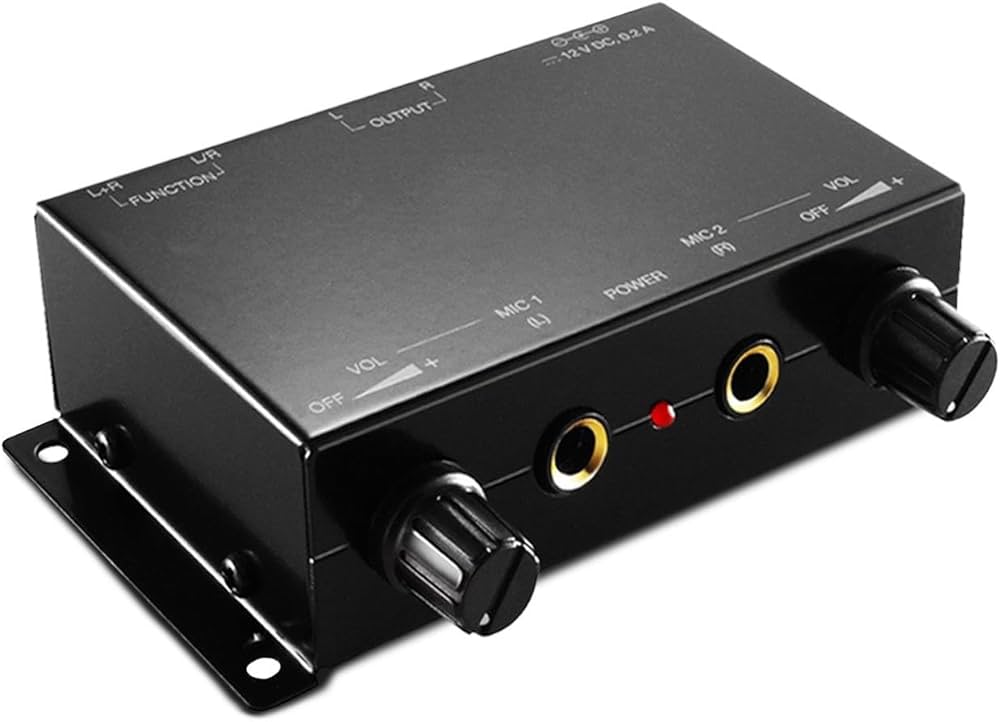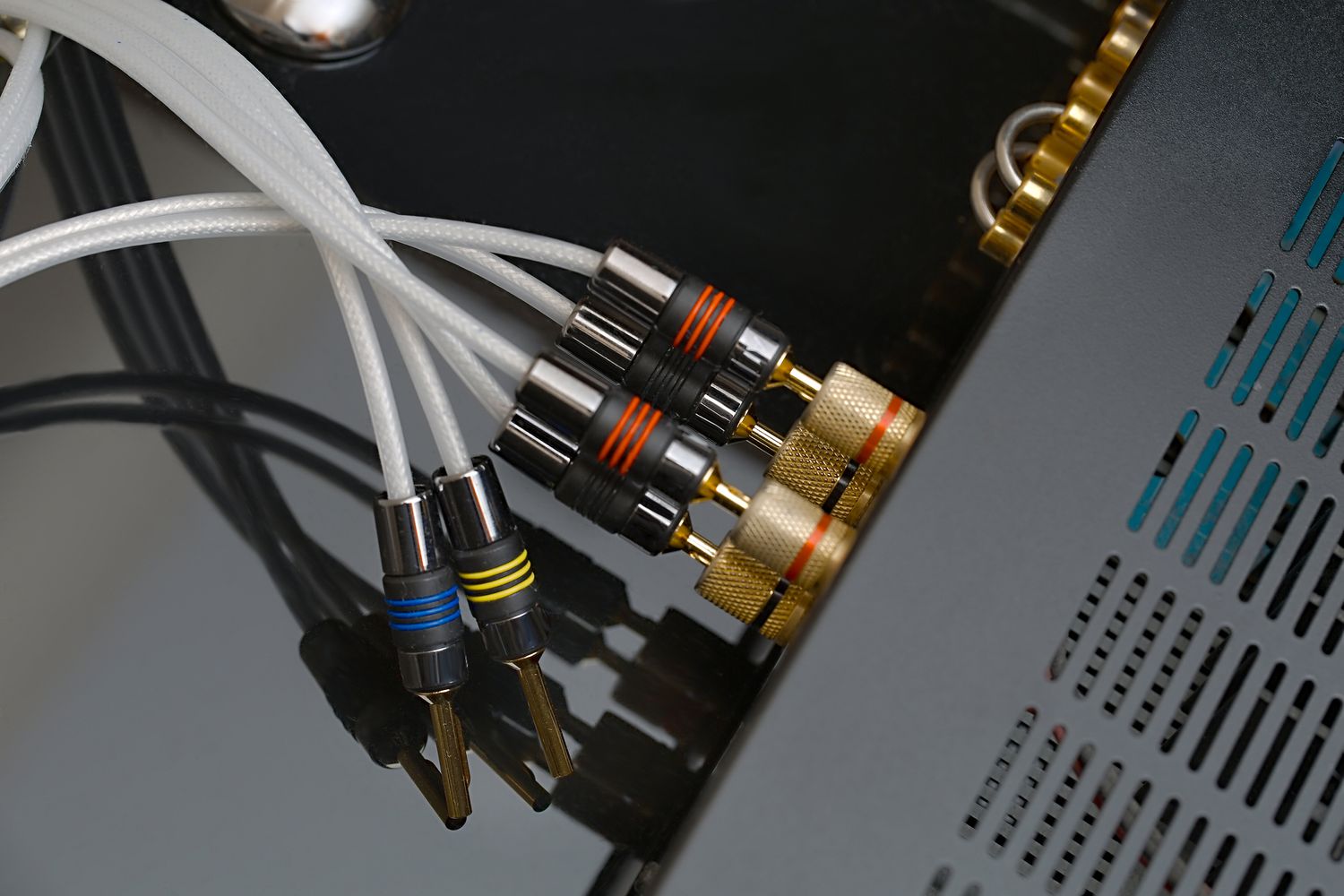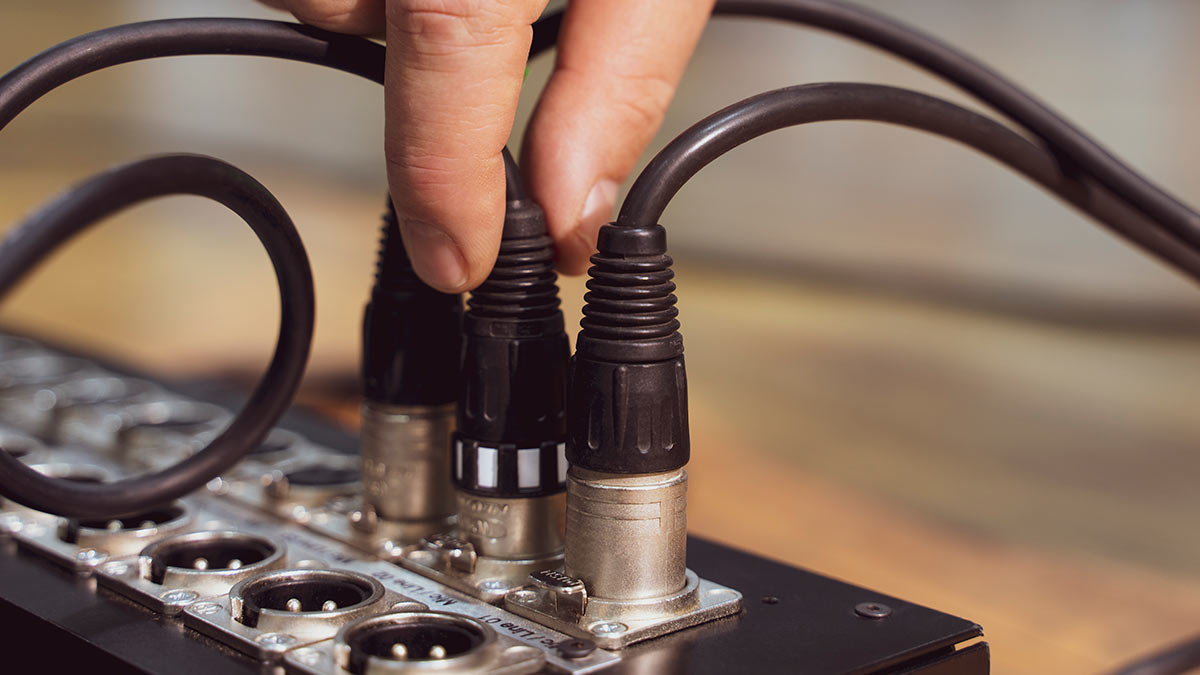Home>Production & Technology>Audio Cable>How To Use Virtual Audio Cable Audio Repeater


Audio Cable
How To Use Virtual Audio Cable Audio Repeater
Modified: January 22, 2024
Learn how to effectively use Virtual Audio Cable as an Audio Repeater, ensuring seamless audio transmission with the help of an Audio Cable.
(Many of the links in this article redirect to a specific reviewed product. Your purchase of these products through affiliate links helps to generate commission for AudioLover.com, at no extra cost. Learn more)
Table of Contents
Introduction
Welcome to the world of audio cables, where the quality of your sound can make all the difference in your listening experience. Whether you’re a professional audio engineer, a music enthusiast, or simply someone who wants to enhance their audio setup, understanding the importance of audio cables is crucial.
In this comprehensive guide, we’ll dive deep into the realm of audio cables and explore one particular type called the Virtual Audio Cable. Virtual Audio Cable, often referred to as VAC, is a software solution that allows you to route audio signals between different applications and devices on your computer. By using virtual cables, you can create a virtual audio path to ensure seamless transmission of audio data.
Why is this important? Well, imagine you’re a DJ and you want to stream music from your DJ software to an online platform. Or perhaps you want to record audio from your computer while simultaneously playing back a video. These are just a few examples of situations where Virtual Audio Cable can come in handy.
With Virtual Audio Cable, you have the flexibility to customize your audio routing and create complex setups that suit your unique needs. Whether you want to split audio, merge multiple sources, or apply effects to specific channels, Virtual Audio Cable gives you the power to do so.
Throughout this guide, we’ll also explore a useful feature called Audio Repeater, which comes bundled with Virtual Audio Cable. Audio Repeater allows you to clone audio from one virtual cable to another, making it even easier to achieve the desired audio routing setup. It’s a handy tool that opens up a world of possibilities for creative audio configurations.
Ready to embark on this audio adventure? Let’s dive into the world of Virtual Audio Cable and learn how to harness its power to enhance your audio experience.
What is Virtual Audio Cable?
Virtual Audio Cable is a software application that allows you to create virtual audio cables on your computer. These virtual cables act as channels for routing audio signals between different applications and devices. It functions as an audio bridge, providing a seamless connection and transmission of audio data.
Unlike physical audio cables that physically connect devices, Virtual Audio Cable operates entirely within the digital realm. It creates virtual endpoints, also known as virtual cables, which can be used to transmit audio between software applications or within the same application.
Virtual Audio Cable offers a wide range of applications. It is commonly used by audio engineers, musicians, and enthusiasts to create complex audio routing setups. It can be a valuable tool for live streaming, recording audio, applying real-time effects, or splitting and merging audio sources.
One of the key advantages of Virtual Audio Cable is its flexibility. You can create multiple virtual cables and route audio signals between them to achieve your desired setup. This allows for customization and fine-tuning of audio paths, ensuring optimal sound quality and control over your audio workflow.
Virtual Audio Cable operates on the principle of input and output endpoints. An input endpoint represents the source of audio, while an output endpoint represents the destination for that audio. By connecting input and output endpoints using virtual cables, you establish an audio link.
When an audio signal is sent through a virtual cable, it is transported as digital data packets rather than analog signals. This digital transmission ensures that the audio remains high-quality and free from interference or degradation.
Overall, Virtual Audio Cable is a powerful tool that opens up a world of possibilities for audio enthusiasts. Whether you’re a professional audio engineer working on a complex production setup or a hobbyist looking to create a customized audio routing system, Virtual Audio Cable provides the flexibility and functionality to meet your needs.
Understanding Audio Repeater
Within Virtual Audio Cable, the Audio Repeater feature plays a crucial role in expanding the capabilities of your audio setup. Audio Repeater is a handy tool that allows you to clone or duplicate audio from one virtual cable to another. This means you can route audio from a specific source to multiple destinations simultaneously.
Imagine you have a virtual cable that receives audio from your microphone input. With Audio Repeater, you can clone that audio and send it to multiple output virtual cables. This opens up a world of possibilities for creating unique audio setups, such as broadcasting your voice to multiple platforms or feeding audio to different applications simultaneously.
Audio Repeater works by creating a connection between an input virtual cable and an output virtual cable. It captures the audio data from the input cable and replicates it to the output cable in real-time. This allows for easy distribution of audio signals across various applications, devices, or software.
In addition to cloning audio, Audio Repeater also offers the ability to apply volume adjustments to the replicated audio. This can be useful when you need to balance the audio levels across different output channels or when you want to create a mix with varying audio intensities.
Furthermore, Audio Repeater can be configured to change the sample rate or buffer size of the replicated audio. This provides flexibility in adjusting the audio characteristics to match the requirements and specifications of different applications or devices.
It’s important to note that while Audio Repeater is a powerful tool, it can also introduce latency to your audio setup. Latency refers to the delay between the input audio signal and its replication in the output virtual cable. It is crucial to balance the need for audio replication with the potential latency introduced by Audio Repeater to ensure a seamless and synchronized audio experience.
Overall, Audio Repeater is a valuable feature within Virtual Audio Cable that provides the ability to clone and distribute audio signals to multiple virtual cables. By utilizing this tool effectively, you can enhance your audio routing setup and create unique and versatile audio configurations.
Setting up Virtual Audio Cable
Setting up Virtual Audio Cable on your computer is a straightforward process that requires a few simple steps. Follow the instructions below to get started:
- Download and install Virtual Audio Cable from a trusted source. There are both free and paid versions available, so choose the one that suits your needs.
- Launch the Virtual Audio Cable software. You will see a control panel interface where you can manage the virtual cables and other settings.
- By default, Virtual Audio Cable installs one virtual cable pair, consisting of one input and one output virtual cable. You can create additional virtual cables by clicking on the “Add Cable” button. Consider the number of virtual cables you need based on your audio routing requirements.
- Each virtual cable has its own properties that can be configured. Right-click on a virtual cable to access its properties. Here, you can set the sample rate, buffer size, and other parameters to optimize the audio flow.
- To establish an audio connection, you’ll need to select an input and output endpoint. An input endpoint represents the source of audio, such as a microphone or a system sound, while an output endpoint represents the destination for that audio, such as a media player or a recording software. In the control panel interface, select the desired input and output endpoints for each virtual cable. You can choose from a list of available audio devices on your computer.
- To test the audio setup, you can use the built-in Audio Repeater tool that comes bundled with Virtual Audio Cable. This tool allows you to clone audio from one virtual cable to another. Simply select the input and output virtual cables to create a connection using the Audio Repeater.
- Once the virtual cables and audio connections are set up, you can test the audio routing by playing audio from a source and confirming that it reaches the desired destination. Adjust the volume levels and other audio settings as needed to achieve the desired output.
It’s important to note that every application or software you want to route audio to or from using Virtual Audio Cable will need to be configured to use the appropriate virtual cable as its audio input or output device. This can usually be done within the settings or preferences menu of the specific application.
By following these steps and configuring the virtual cables and audio connections, you can successfully set up Virtual Audio Cable and begin leveraging its powerful capabilities for your audio routing needs.
Configuring the Audio Repeater
Configuring the Audio Repeater within Virtual Audio Cable is a crucial step in fine-tuning your audio routing setup. By adjusting the settings of the Audio Repeater, you can customize the replication of audio from one virtual cable to another. Here’s how to configure the Audio Repeater:
- Launch the Virtual Audio Cable control panel and locate the virtual cable pair you want to use with the Audio Repeater.
- Right-click on the virtual cable that you want to replicate audio from and select “Properties” from the context menu.
- In the Properties window, you’ll find the settings for the selected virtual cable. Locate the “Audio Repeater (KS)” section and click on the “KS” button to access the Audio Repeater settings.
- In the Audio Repeater settings, you will see options to configure the source, target, and buffer settings. The source represents the input virtual cable from which you want to clone audio, while the target represents the output virtual cable to which you want to replicate the audio. Adjust these settings according to your specific audio routing needs.
- You can also adjust the buffer settings to control the latency and audio stability. The buffer size determines the amount of audio data that gets processed at once, which can affect the latency. Finding the right balance of buffer size is crucial to ensure optimal audio performance.
- For more advanced users, there are additional options available in the Audio Repeater settings, such as adjusting the sample rate, changing the wave format, or applying volume adjustments to the replicated audio. Explore these options to further fine-tune your audio setup.
- After configuring the Audio Repeater settings, click on the “Apply” or “OK” button to save the changes.
It’s important to note that configuring the Audio Repeater requires some experimentation and adjustment to achieve the desired audio results. You may need to make several iterations of the settings to find the optimal configuration that suits your specific audio routing needs.
Remember to test your audio setup after configuring the Audio Repeater to ensure that audio is being successfully replicated from the source virtual cable to the target virtual cable. Adjust the volume levels, buffer size, and other settings as needed to achieve the desired audio output.
With proper configuration of the Audio Repeater, you can fully utilize the power of Virtual Audio Cable to clone and distribute audio signals to multiple virtual cables, enhancing your audio routing setup.
Testing the Audio Setup
Once you have set up Virtual Audio Cable and configured the Audio Repeater, it’s important to thoroughly test your audio setup to ensure everything is working as intended. Here are some steps to help you test your audio setup:
- Select the input and output endpoints for each virtual cable in the Virtual Audio Cable control panel. Ensure that the input endpoint is set to the audio source you want to capture, such as a microphone or system audio.
- In the Virtual Audio Cable control panel, create connections using the Audio Repeater feature. Select the input virtual cable from which you want to clone audio and the output virtual cable to which you want to replicate that audio.
- Open the application or software you want to route audio to or from. Go to the audio settings or preferences menu of that application and select the appropriate virtual cable as the input or output device.
- Start playing audio from a source, such as a media player or a microphone, and check if it is successfully routed to the desired output destination. You should be able to hear the replicated audio in the selected output application or software.
- Adjust the volume levels in both the input and output endpoints to ensure a balanced audio output. You can do this in the Virtual Audio Cable control panel or within the application or software settings.
- Test different audio sources and destinations to verify that the audio is correctly routed. Try capturing audio from your microphone and streaming it to multiple applications simultaneously, or playing audio from one application and routing it to a recording software.
- Monitor the performance of your audio setup and check for any potential issues, such as latency, distortion, or audio dropouts. Adjust the buffer sizes and other settings within Virtual Audio Cable to optimize the audio performance.
During the testing phase, it’s important to pay attention to any potential audio issues or irregularities. If you encounter problems, double-check your settings, ensure that the virtual cables are properly connected, and verify that the applications are configured to use the correct virtual cable as the input or output device.
By thoroughly testing your audio setup, you can identify and resolve any issues, ensuring a seamless and efficient audio routing experience with Virtual Audio Cable.
Troubleshooting Tips
While Virtual Audio Cable is a powerful tool for audio routing, you may encounter some challenges or issues along the way. Here are some troubleshooting tips to help you resolve common problems:
- Check your audio device settings: Ensure that your input and output audio devices are configured correctly. Go to your computer’s audio settings and make sure the selected devices align with your desired audio setup.
- Verify application settings: Double-check that the applications you want to route audio to or from are configured to use the correct virtual cables as input or output devices. Each application may have different settings menus, so explore the audio preferences or settings to make the necessary adjustments.
- Restart applications: If you’re experiencing issues with audio routing, try restarting the applications involved in the setup. This can help refresh the audio connections and resolve any temporary glitches.
- Reinstall Virtual Audio Cable: If you’re encountering consistent issues, it may be helpful to reinstall Virtual Audio Cable. Uninstall the software and then reinstall it from a trusted source. Ensure that you’re using the latest version available.
- Adjust buffer sizes: If you’re experiencing audio latency or dropouts, try adjusting the buffer sizes within Virtual Audio Cable. Increasing the buffer size can help reduce latency, but be mindful that extremely high buffer sizes may introduce additional delay.
- Update audio drivers: Ensure that your computer’s audio drivers are up to date. Outdated or incompatible drivers can cause audio routing issues. Visit the manufacturer’s website or use driver management software to update your audio drivers.
- Check for conflicts with other audio software: Virtual Audio Cable may conflict with other audio-related software installed on your computer. If you experience issues, try closing or uninstalling any unnecessary audio applications or drivers that may interfere with the functionality of Virtual Audio Cable.
- Seek support: If you’ve exhausted all troubleshooting options and are still experiencing issues, reach out to the Virtual Audio Cable support team or consult online forums and communities dedicated to audio routing. These resources can provide additional guidance and insights into specific problems.
Remember that troubleshooting audio setups can be a trial-and-error process. It’s essential to be patient and persistent in finding and resolving any issues you encounter. With some troubleshooting and adjustments, you’ll be able to overcome obstacles and enjoy a smooth and efficient audio routing experience with Virtual Audio Cable.
Conclusion
Virtual Audio Cable is a powerful software solution that opens up a world of possibilities for audio enthusiasts and professionals alike. With its ability to create virtual audio cables and route audio signals between applications and devices, Virtual Audio Cable provides the flexibility and customization needed to enhance your audio setup.
Throughout this guide, we have explored the basics of Virtual Audio Cable, including its functionality, the concept of virtual cables, and the importance of the Audio Repeater feature. We have discussed the steps to set up Virtual Audio Cable and configure the Audio Repeater to clone and distribute audio signals across multiple virtual cables.
Testing your audio setup and troubleshooting any issues that arise are crucial steps to ensure optimal performance. By following the troubleshooting tips outlined in this guide, you can overcome common challenges and optimize your audio routing experience.
Whether you’re a DJ, a streamer, a musician, or an audio enthusiast, Virtual Audio Cable provides the flexibility and functionality to create customized audio configurations. From splitting and merging audio sources to applying real-time effects, the possibilities are endless.
As you explore and experiment with Virtual Audio Cable, remember to strike a balance between functionality and the potential for latency or other audio issues. With proper configuration and testing, you can achieve a seamless and efficient audio routing setup tailored to your specific needs.
So, go ahead and harness the power of Virtual Audio Cable to unlock new possibilities in your audio setup. Create complex audio routing systems, enhance your live performances, and elevate your audio production workflow. With Virtual Audio Cable, the world of audio becomes more versatile and dynamic.











